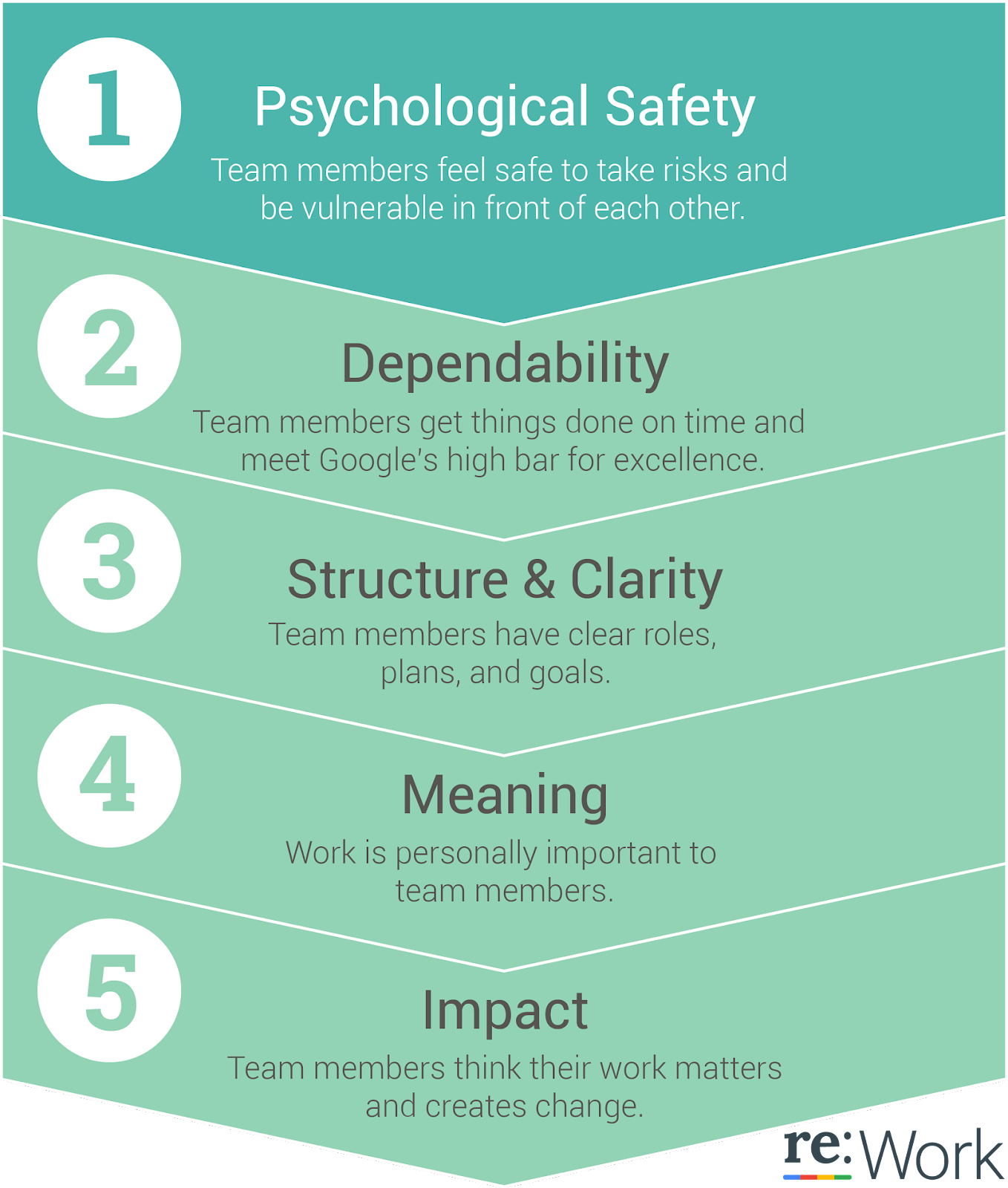Teamwork Makes the Dream Work: 7 Companies to Learn From
Did you know the famous “Teamwork makes the dream work” quote has a second part? Well, it goes something like this: “…but a vision becomes a nightmare when the leader has a big dream and a bad team.”. These are the words of clergyman John C. Maxwell, taken from his 2002 book entitled – you guessed it – Teamwork Makes the Dream Work.
Although seemingly outdated, the essence of this message remains just as relevant now, 21 years later.
Experts from Yale University highlight that ignoring the need to foster relationships within the workplace can substantially compromise team performance. Let’s see what seven leading companies do to prevent this.
Teamwork makes the dream work: 7 companies to draw inspiration from
The four building blocks of successful teamwork are approachability, accountability, respect and equality. Here are seven real-life examples to help you illustrate how you can implement these values in your company.
Google
The idea for Google’s Project Aristotle came to life following the success of the 2009 Project Oxygen, as a tribute to the Greek philosopher, who has been known to say, “The whole is greater than the sum of its parts”. The Google People Analytics team understood this to mean that employees can achieve more as a team than as individuals.
These researchers embarked on a journey to answer “What makes a team effective at Google?”. They broke this down into smaller steps:
Understanding what a team is and what makes it different from a workgroup
Pinpointing how to quantitatively and qualitatively measure a team’s effectiveness
Analyzing 180 different teams – how team composition and dynamics impact success
Identifying which of the collected inputs impact effectiveness – with a focus on variables that come up for different types of teams, show consistent significance and affect multiple metrics
Here is an illustration of the findings (appearing in order of importance):
Apple
We can say many things about Steve Jobs – both good and bad. However, we can certainly learn something from him regarding leadership and company success. He once said, “It's not my job to be easy on people. My job is to take these great people we have and to push them and make them even better.”
Ben Morton Chartered MCIPD studied the visionary’s approach to leadership and the way that Apple functions and summarized the company’s formula for a High Performing Team in these points:
One person in charge: It should always be clear who is responsible for what and who is accountable for delivering the work. That way, there is less frustration and confusion.
Meet once a week: This is crucial (yet frequently overlooked) in busy and stressful times for effectively tackling challenges with a united effort.
Teamwork starts at the top: Teams of every seniority level should work together to set examples for those below them.
Trust is key: This is the glue that holds teams together and allows members to challenge each other when necessary.
Have wonderful arguments: Fear of conflict and false harmony are the nemesis of development.
Let people make decisions: This shows trust in your employees, giving them the power to make autonomous plans and judgments, thus encouraging engagement.
Work toward one goal: Make it clear, inspiring and achievable, but most of all – something each employee can relate to and feel a part of.
Pixar
“Pixar is a community in the true sense of the word. We think that lasting relationships matter, and we share some basic beliefs: Talent is rare.”, says Ed Catmull, co-founder and ex-president of Pixar.
When discussing the success of globally beloved Pixar animations, he highlights that creativity in filmmaking (or any other big venture) isn’t a solo act – instead, it “involves a large number of people from different disciplines working effectively together to solve a great many problems.”
Catmull points out that the studio has never bought ideas from the outside. All their stories, with each intricacy, were created internally. That requires a great number of exceptionally talented people. One challenge is finding them, and another – getting them to work together effectively.
It requires trusting, respectful managers who can create an environment where everyone feels part of something extraordinary and has enough free rein to express themselves. Their collective passion acts as a magnet, solidifying relationships and bringing new, well-fitting people in.
W.L. Gore & Associates
Imagine a workplace without bosses. Impossible? The co-founder of W.L. Gore & Associates, Bill Gore, would beg to disagree: he created a work environment of 10,000 employees who work together as intertwined associates in which no one is anyone's boss.
Each project and activity within the company has part-time leaders who emerge organically based on their merits, credibility, experience in the particular field and abilities to attract followers. This is what Gore defines as “Natural Leadership”.
This potential for absolute anarchy helped create a tremendously successful company, coming up with the Gore-Tex “waterproof while breathing” material as one example. It’s become an integrated, continuously evolving and self-organizing team with a lattice structure, lacking any chains of command.
Based on this practice, all decisions are “made by the most knowledgeable person, not the person in charge”, according to ex-CEO Terri Kelly.
Starbucks
From just “a coffee shop”, Starbucks grew into “the coffee shop” – a feat not left to chance. Among many other policies that played a role in their success, their teamwork culture was undoubtedly one of them.
CEO Howard Schultz considers people, not coffee, the tip of the company’s success. The teamwork formula is based on an interactive, motivating structure that includes three core pillars:
Equal treatment: Referring to all the staff as partners, which narrows the gaps between seniority levels and makes everyone feel important.
Listening to employees: With a well-organized communication channel, always considering time-off requests and suggestions about company decisions or workplace environment.
Good welfare measures: Everyone has personnel discounts, medical insurance and vacations. Partners who work over 20 hours/week are offered a free scrip issue, which ingeniously motivates them to strive towards the common goal – increasing sales and earning profits.
And they have numbers to show for it: with a turnover rate of 65% for employees and 25% for managers – impressively low numbers compared to industry competitors with a rate of 150-400% and 50%, respectively.
Ford Motor Company
Ideas are the biggest asset in such a highly competitive market as the motor industry. The Ford Motor Company came up with a way to generate them.
The premise is simple: bringing together staff from every division in cross-functional teams that will spend three days brainstorming what Ford can do better. No matter how abstract or absurd, each team chooses one suggestion and spends the next 90 days converting it into an actionable plan, using the varied talents of the group.
This is somewhat of a follow-up to Starbucks’ premise to make everyone feel like owners by giving them the power and resources to shape the company.
The cross-functional approach has another benefit: “The mix of approaches led to fresh thinking and high levels of motivation.”, says Joanne Sheehan, corporate affairs manager. It’s also a way of identifying potential problems that people with similar expertise can miss.
Coca-Cola
Coca-Cola implemented a somewhat similar approach with tremendous success. Around 2011, Embotelladora Andina (one of Latin America’s largest Coca-Cola bottlers) saw a period of frustrating stagnation and employee disengagement, with many wasted opportunities for growth.
Then, in 2013, they implemented the Andina Excellence System. Teams and individuals underwent training in their general and specific operational skills. The most notable progress was seen in the aspect of multidisciplinary teamwork, where a strong problem-solving culture emerged. This translated into such impressive Profit Improvement Project results:
Reduction of returnable bottle breakage by 8%
Reduction of preform breakage by 19%
Reduction of raw material loss for sweeteners by 47%
Reduction of plant accidents dropped by 49%
Conclusion
Some of these statements may have been contradictory to one another, but that just goes to show that each company and group of people needs something slightly different to make them tick. So, take what works and leave what doesn’t.
In the words of Pixar’s Ed Catmull, “If you give a good idea to a mediocre team, they’ll screw it up. But if you give a mediocre idea to a great team, they’ll make it work.”. You’ll see this proven time and time again when you invest time and care into supporting your team to perform to its best ability.
It won’t happen overnight, but every success story starts with the first step. Take yours today, inspired by these exemplary leaders who promote trust, equality and agency among teams.





